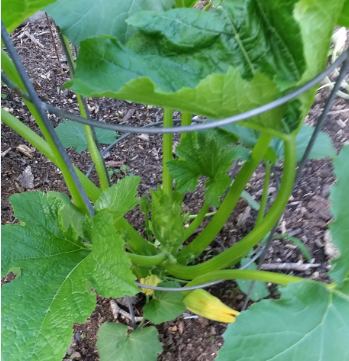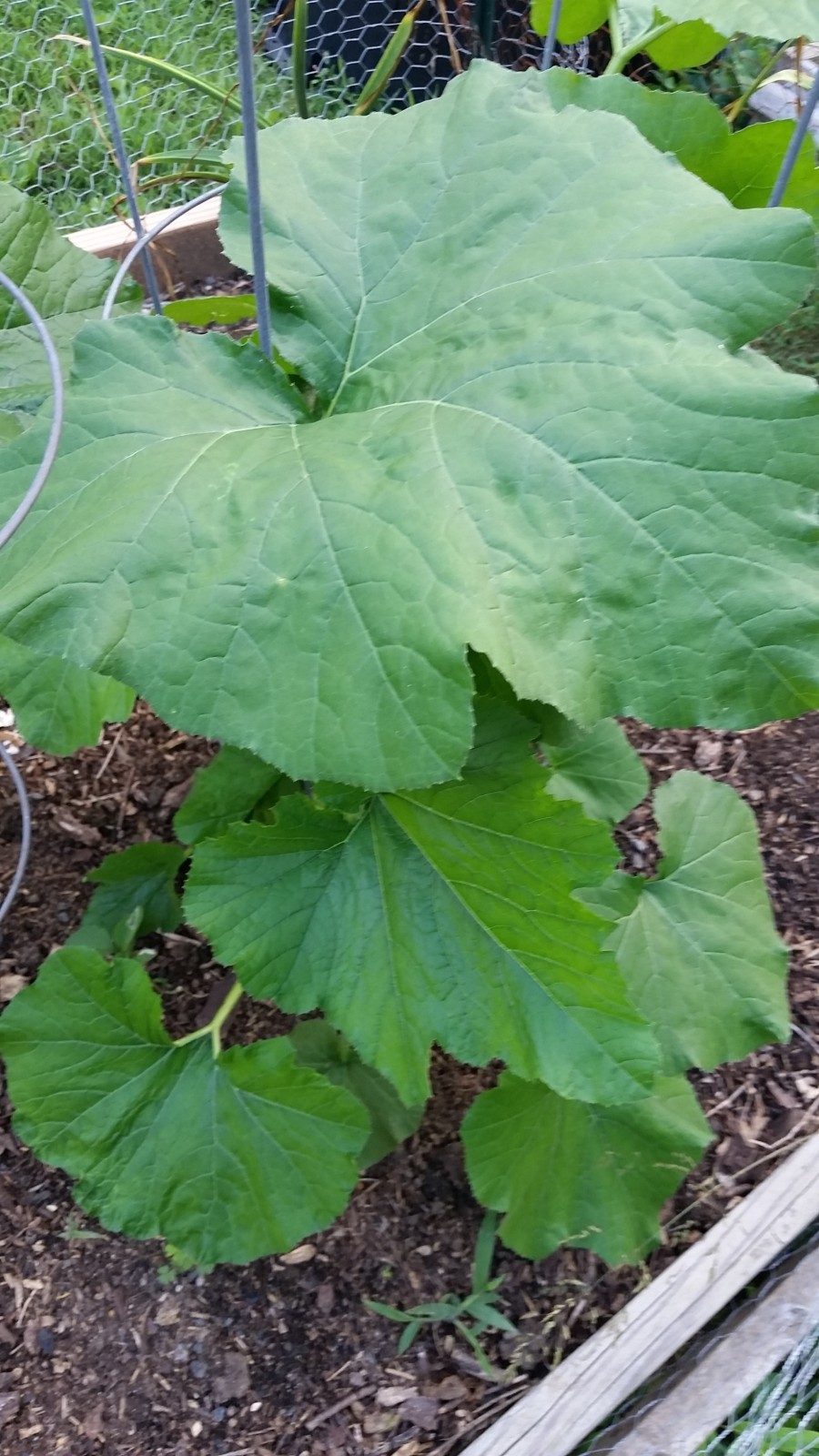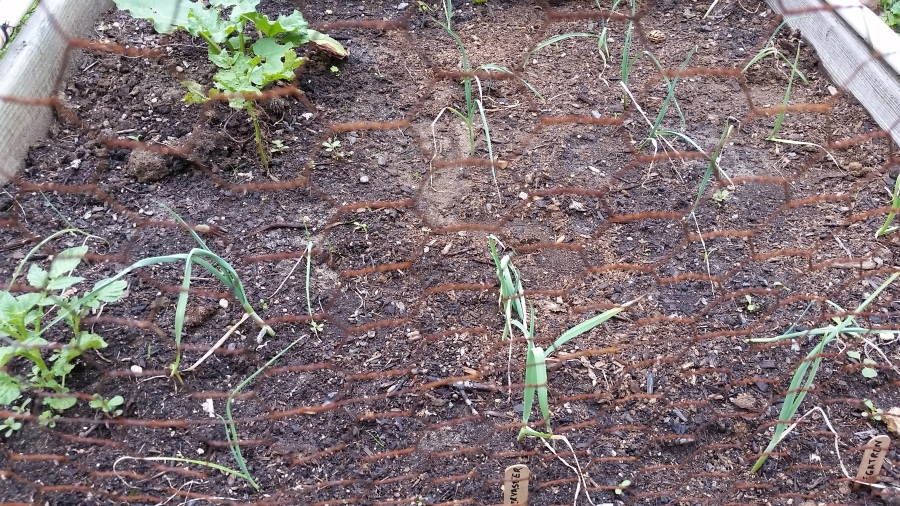 OK, maybe that’s a bit of an exaggeration, but it sure feels like it, especially after all the rain we got last night. We even have our first flowers!
OK, maybe that’s a bit of an exaggeration, but it sure feels like it, especially after all the rain we got last night. We even have our first flowers!
We are experimenting this year with growing the plants upright by containing each in a large tomato cage instead of using a “fence” to keep them from sprawling all over the raised bed. It seems like only a week ago they were still pretty tiny. Now the leaves have topped the second of four rings. I try to push the leaves back into the cage before they get too big. So far it’s working.
The idea is that by growing the plants up, it will be easier to see the actual zucchini before they become the size of a baseball bat. I have another incentive to harvest them small — apparently it encourages more flowering.
This is how big one plant looks on the last day of spring. The top leaves are ginormous!

The other advantage is that it can be easier to spot the squash vine borers that attack the stem and kill the plant. That’s been our problem in the last few years, of course just as the glut gets going. This video is inspiring me to start checking, to find out what I need to use for dusting — and to start fertilizing since the plants are heavy feeders. Good thing I have some TerraCycle worm poop fertilizer, made in down the road in Trenton. I worked a little bit into the soil, ready for the next rain, which might come Friday.
Keeping leaves off the ground helps fight against bugs. This video says I also need to scatter Sevin Dust carefully around the base. But it does seem like nasty stuff and kills beneficial insects like bees, which we don’t want to do. So I’m googling away for other ideas. This video suggests just spraying dishwater detergent dissolved in water could do the trick too, at least with aphids, and can work on cucumbers. Sounds like that requires some persistence. Maybe we will use some of the aphid-fighting Neem we already have.
Want to weigh in?
We are using the cages the same way we would use them for tomato plants, so the narrowest part is at the bottom and the prongs are in the soil. If we wanted to test it the other way, well, it’s too late. Plus we’d have needed some kind of clip to keep the cage from toppling over in the wind. We have no idea how heavy the plant will be and whether an upside-down cage could support them or would tip over. That first video says we should have bamboo stakes too. One more thing to do…

 Once again, we have used our travels to help stock the vegetable garden.
Once again, we have used our travels to help stock the vegetable garden. We bought 18 plugs (six of each variety), so less than $3 before tax; we have more than twice that many plants. There’s the Megaton, which it seems should be harvested in the fall, rather than left to cope with snow; the Gevaria, which a seed company describes as a mid-season harvest; and the Lexton, which that same company describes as very frost-hardy. It will be an interesting experiment and taste test.
We bought 18 plugs (six of each variety), so less than $3 before tax; we have more than twice that many plants. There’s the Megaton, which it seems should be harvested in the fall, rather than left to cope with snow; the Gevaria, which a seed company describes as a mid-season harvest; and the Lexton, which that same company describes as very frost-hardy. It will be an interesting experiment and taste test.